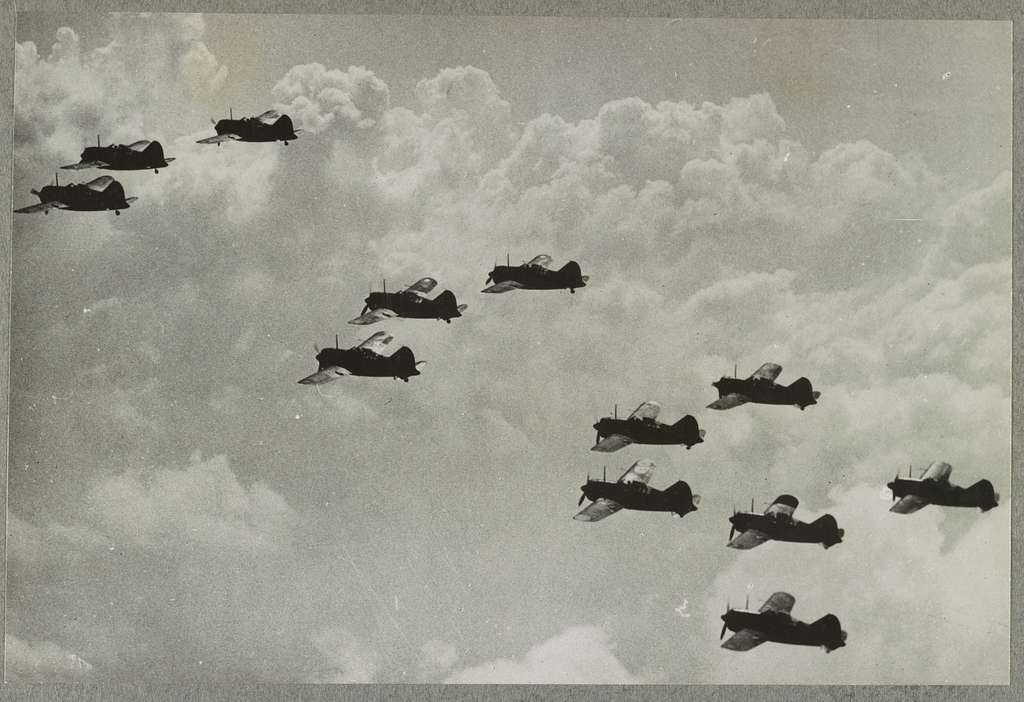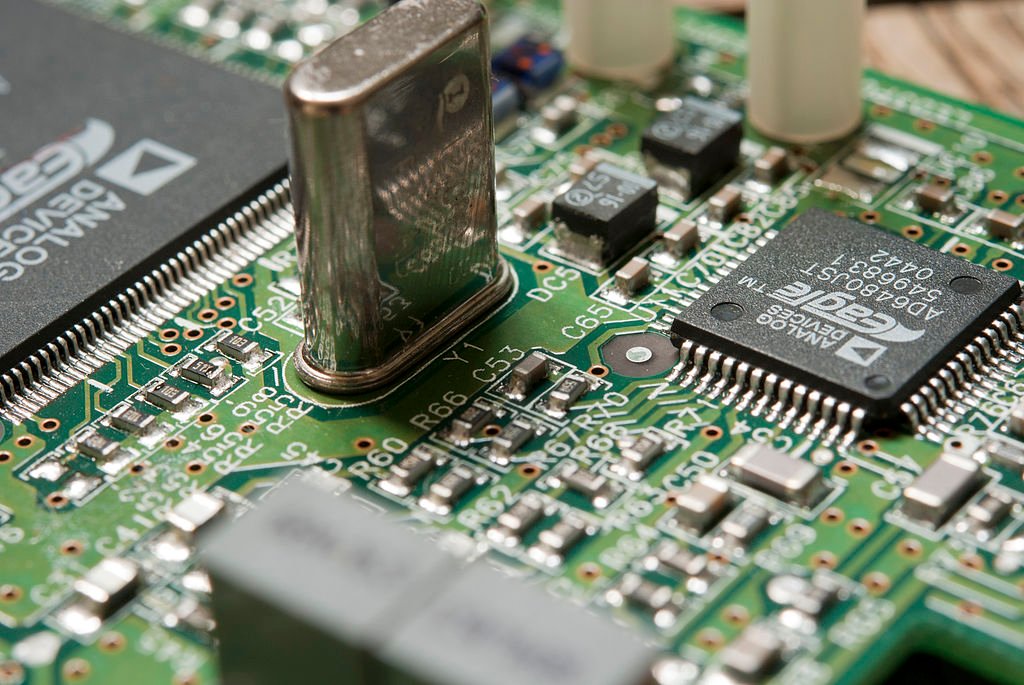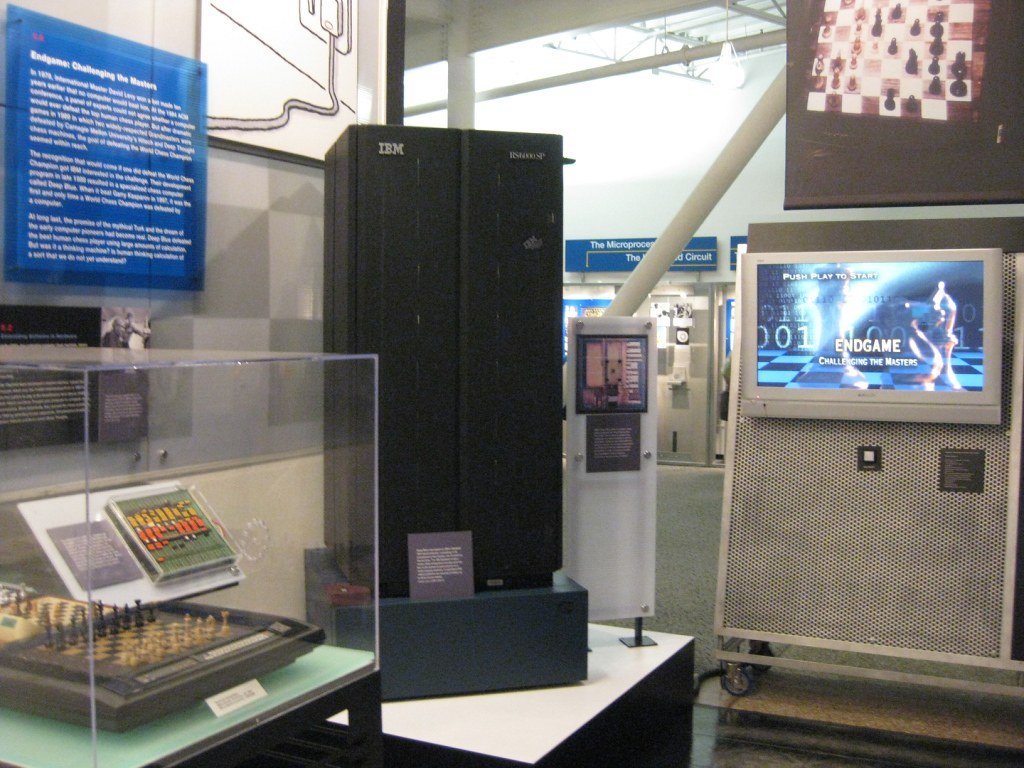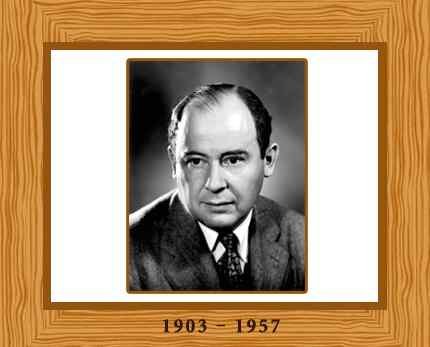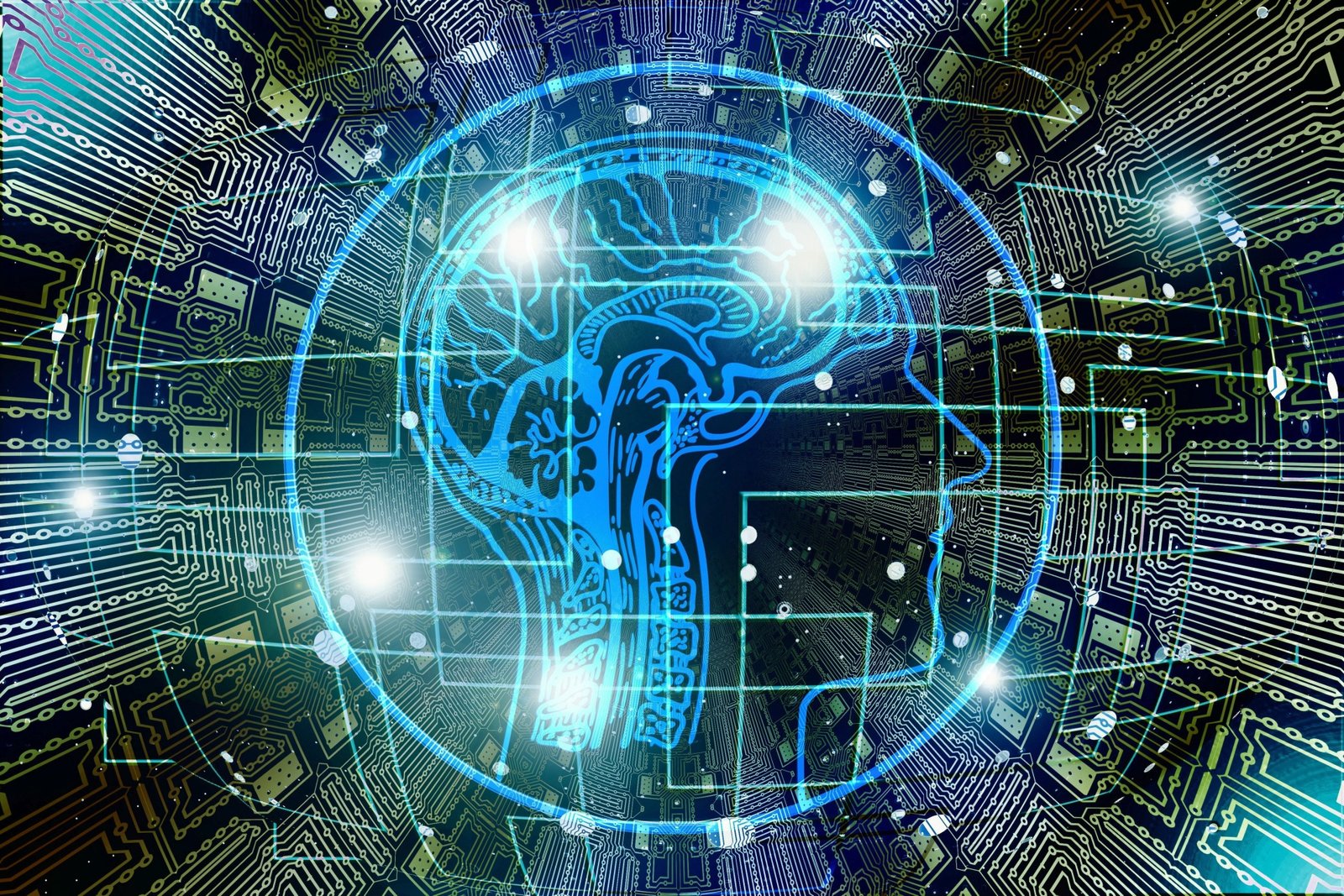The story of Deep Blue, IBM’s groundbreaking chess computer, stands as an enduring testament to the relentless pursuit of artificial intelligence’s capabilities in strategic gaming. In the mid-1990s, at the intersection of advanced computing and chess mastery, Deep Blue emerged as a pivotal milestone in the history of chess engines and machine intelligence.
Deep Blue, developed by the tech giant IBM, transcended the boundaries of traditional chess computers, evolving from its predecessor, Deep Thought, into a sophisticated chess engine designed for a single purpose: outplaying the world’s most formidable human chess grandmasters. This chess computer represented a quantum leap in computational prowess, harnessing the immense power of parallel processing to evaluate millions of potential moves per second.
1996 Deep Blue became a household name when it challenged the reigning World Chess Champion, Garry Kasparov, to a historic six-game match.
The world watched in awe as Deep Blue claimed victory in the first game, sending shockwaves through the chess community and signaling the arrival of AI as a formidable adversary in the chess world.
The rivalry between Deep Blue and Kasparov reached its zenith in 1997 when they faced off once again. Deep Blue clinched victory in a remarkable turn of events, marking the first time a computer triumphed over a reigning world champion in a full-length chess match. This momentous achievement showcased Deep Blue’s prowess and reshaped the future of artificial intelligence, inspiring further research and development in the field.
Table of Contents
Who developed Deep Blue chess?
Deep Blue, the groundbreaking chess computer, was developed by a team of researchers and engineers at IBM, one of the world’s leading technology companies. The project was initiated in the early 1980s and underwent several stages of development before becoming the formidable chess-playing machine it is known as today.
Key figures in the development of Deep Blue include Feng-hsiung Hsu, who played a pivotal role in the project. Hsu, a Taiwanese-American computer scientist, created the chess-playing software that powered Deep Blue. His expertise in computer chess programming and algorithms was instrumental in the project’s success.
The hardware and system architecture of Deep Blue were also meticulously designed by a team of engineers and computer scientists at IBM. They created a custom-built supercomputer capable of evaluating millions of chess positions per second, giving Deep Blue remarkable computational power.
Deep Blue‘s evolution from its early iterations, such as Chiptest and Deep Thought, into a world-class chess engine was the result of collaborative efforts within IBM. The culmination of years of research, development, and refinement ultimately led to Deep Blue’s historic victory over the reigning World Chess Champion, Garry Kasparov, in 1997.
Deep Blue’s development was a collective achievement. IBM’s research and development teams worked to create a chess computer that pushed the boundaries of artificial intelligence and computer chess.
What is the history of IBM Deep Blue?
IBM Deep Blue, a landmark in artificial intelligence and chess computing, has a remarkable history:

1. Early Development
Deep Blue’s roots trace back to the 1980s when IBM researchers, including Feng-Hsiung Hsu, began developing chess programs. Initially known as “Chiptest,” it evolved into “Deep Thought,” a powerful chess program.
2. Deep Blue’s Emergence
In 1995, IBM unveiled Deep Blue, a custom-built supercomputer designed solely for chess. It boasted immense parallel processing power, enabling it to analyze millions of chess positions per second.
3. Deep Blue vs. Kasparov (1996)
Deep Blue gained international attention when it challenged reigning World Chess Champion Garry Kasparov in a six-game match. While Kasparov ultimately won, Deep Blue’s victory in one game marked a historic moment as the first time a world champion lost to a computer under standard chess tournament conditions.
4. Deep Blue’s Triumph (1997)
In a highly anticipated rematch, Deep Blue faced Kasparov again in 1997. This time, Deep Blue won the six-game match 3.5-2.5. It was a watershed moment, marking the first time a computer defeated a reigning world chess champion in a full match.
5. Legacy
Deep Blue’s success reshaped the chess landscape and accelerated advancements in artificial intelligence and machine learning. It demonstrated the potential of AI in complex decision-making tasks beyond chess, influencing future research and applications.
IBM’s Deep Blue remains an iconic symbol of human-computer competition and collaboration, showcasing the power of technology to challenge and elevate human performance in strategic endeavors.
What is IBM Deep Blue famous for?
IBM Deep Blue is famous for being the first computer to defeat a reigning world chess champion in a match, a landmark achievement that reverberated through the worlds of chess, artificial intelligence, and computing. Here’s why Deep Blue is renowned:
Victory Over Garry Kasparov
Deep Blue gained worldwide recognition for its historic victory over Garry Kasparov, the reigning World Chess Champion, in a six-game match in 1997. This marked the first time a computer had defeated a human world chess champion under standard tournament conditions.
Advancements in Chess Computing
Deep Blue’s success represented a significant milestone in the development of chess engines and computer chess. It demonstrated that computers could rival and surpass human grandmasters in one of the most complex and strategic board games.
Computational Power
Deep Blue’s victory showcased modern supercomputers’ incredible computational power and parallel processing capabilities. It could evaluate millions of potential chess positions per second, enabling it to make highly informed decisions.
Public Awareness
The Deep Blue and Kasparov matches garnered immense media attention and public interest. They brought the concept of artificial intelligence and machine learning to the forefront of public consciousness and sparked discussions about the future of human-computer competition.
Impact on AI
Deep Blue’s success had a lasting impact on artificial intelligence, inspiring further research and development in machine learning, game theory, and computer science. It demonstrated the potential for AI to excel in complex, real-world scenarios beyond chess.
IBM Deep Blue is famous for its groundbreaking victory over a world chess champion, which symbolized a triumph of computational power and marked a pivotal moment in the history of artificial intelligence and computer chess.
Deep Blue: IBM’s Chess-Playing Supercomputer
Deep Blue was a pioneering chess computer developed by IBM that made significant advancements in the field of artificial intelligence and computer chess. Here’s a brief history of Deep Blue:
Early Development
In the early 1980s, IBM researcher Feng-hsiung Hsu embarked on a groundbreaking journey at the intersection of artificial intelligence and chess. This marked the inception of what would eventually become Deep Blue, a pioneering chess computer.
Hsu, along with a dedicated team of colleagues, initiated their work by developing a chess-playing computer program dubbed “Chiptest.” This initial foray laid the foundation for their ambitious goal of creating a computer capable of taking on the world’s best human chess players.
As their project evolved, the team found inspiration in popular culture, renaming their endeavor “Deep Thought,” a nod to the supercomputer featured in Douglas Adams’ science fiction masterpiece, “The Hitchhiker’s Guide to the Galaxy.” This whimsical choice of name reflected the team’s determination to create a machine that could rival human intellect in the intricate and strategic world of chess.
Little did they know that this journey would culminate in the creation of Deep Blue, the computer that would go on to make history by challenging and defeating the reigning world chess champion, Garry Kasparov, in a momentous match in 1997. The legacy of Deep Blue continues to resonate as a testament to the power of human ingenuity and technological innovation.
Deep Thought
Deep Thought, the precursor to IBM’s famous chess computer Deep Blue, emerged as a groundbreaking chess program in the early 1990s. Its development marked a significant step forward in the world of computer chess. Deep Thought was a highly sophisticated chess engine capable of analyzing chess positions with remarkable speed and precision, making it a formidable opponent in various chess tournaments.
During its competitive years, Deep Thought garnered recognition and respect within the chess community for its strong performance. It demonstrated a level of play that surpassed most human chess players, showcasing the potential of computerized chess analysis and strategy.
However, despite its impressive capabilities, Deep Thought still fell short of competing with the absolute elite of human chess players, including world champions like Garry Kasparov. The complexity and depth of chess, combined with the intuition and creativity of human grandmasters, remained a formidable challenge for computer programs like Deep Thought at that time.
This experience with Deep Thought laid the groundwork for IBM’s continued efforts to push the boundaries of chess computing, leading to the development of Deep Blue, which eventually succeeded in defeating the reigning world champion, Garry Kasparov, in 1997, making history in the world of chess and artificial intelligence.
The Birth of Deep Blue
In 1995, IBM made a significant leap in chess computing when they transitioned from their earlier chess program, Deep Thought, to the creation of Deep Blue. Deep Blue was a dedicated supercomputer meticulously designed to excel in the complex game of chess.
This transition represented IBM’s substantial investment in computational technology and artificial intelligence research. Deep Blue was a custom-built engineering marvel, featuring a highly parallel system architecture that allowed it to assess millions of potential chess positions each second. This remarkable computational capacity enabled Deep Blue to analyze chess positions with unprecedented depth and precision, giving it a distinct advantage over human opponents.
The development of Deep Blue not only showcased IBM’s commitment to advancing the field of AI and chess computing but also signaled a new era in the convergence of high-performance computing and strategic decision-making. It laid the foundation for the following historic chess matches, cementing Deep Blue’s legacy as a groundbreaking milestone in the evolution of artificial intelligence and computer chess.
Deep Blue vs. Garry Kasparov (1996)
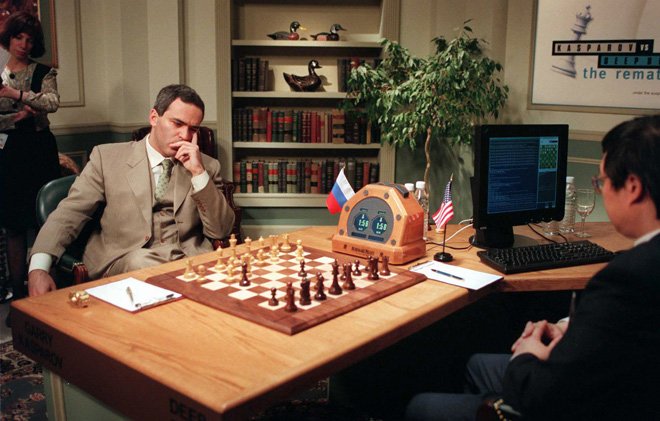
Deep Blue’s historic moment in 1996, when it challenged reigning World Chess Champion Garry Kasparov, left an indelible mark on chess and artificial intelligence. This six-game match was highly anticipated, as it pitted the human champion against the cutting-edge computational power of Deep Blue.
The shockwave came early in the match when Deep Blue claimed victory in the first game. It was a watershed moment, marking the first time a computer defeated a reigning world champion under standard chess tournament conditions. This single win by Deep Blue was historic, underscoring the rapid advancements in AI and chess computing.
While Kasparov managed to rebound and ultimately secured a 4-2 victory in the match, Deep Blue’s triumph in that solitary game illustrated the tremendous potential of computers to excel in complex, strategic domains like chess. This victory initiated a transformative period in the relationship between humans and machines, igniting discussions about the capabilities of AI and its impact on competitive endeavors beyond chess. Deep Blue’s remarkable achievement in 1996 set the stage for an even more iconic rematch in 1997, solidifying its place in the annals of both chess and computer science history.
Deep Blue vs. Garry Kasparov (1997)
In 1997, the highly anticipated rematch between IBM’s Deep Blue and the reigning World Chess Champion, Garry Kasparov, solidified Deep Blue’s place in history. This rematch was a pivotal moment in chess and artificial intelligence.
Deep Blue’s victory in this six-game match, with a score of 3.5-2.5, made it the first computer to defeat a reigning world chess champion in a full-length match. The triumph was a testament to the rapid advancements in computer hardware, software, and algorithms, which enabled Deep Blue to outmaneuver one of the greatest chess players ever.
This victory shocked the chess community and captivated the world’s attention. It demonstrated the immense potential of artificial intelligence and machine learning in mastering complex, strategic games. Kasparov’s loss also led to widespread discussions about the role of technology in the future of competitive chess and the capabilities of AI systems in general.
Deep Blue’s historic win in 1997 not only marked a watershed moment in the history of chess but also catalyzed further developments in artificial intelligence, inspiring researchers to explore new horizons and applications for machine learning and computational intelligence.
Legacy and Impact
Deep Blue’s victory over Garry Kasparov in 1997 was a watershed moment in chess and artificial intelligence, with far-reaching consequences. It demonstrated that computers had advanced to a level where they could challenge and outperform human experts in a game as intricate and strategic as chess. This breakthrough shattered the long-held belief that human intuition and creativity would always surpass machine capabilities in such endeavors.
The impact of Deep Blue extended beyond the chessboard. It ignited a wave of interest and research in computer chess and artificial intelligence. Researchers and developers were galvanized by the idea that AI could tackle complex problems and excel in domains requiring strategic thinking and pattern recognition.
Moreover, Deep Blue’s technology and experience laid the foundation for developing more sophisticated AI systems, transcending chess to find applications in fields ranging from healthcare and finance to natural language processing and autonomous vehicles. The triumph of Deep Blue continues to stand as a testament to the limitless potential of AI and its transformative influence on various aspects of our lives.
Following its historic victory in 1997, IBM decided to retire Deep Blue from competitive chess, recognizing that it had achieved its primary mission: proving the potential of AI in defeating human chess champions. The legacy of Deep Blue endures as a pivotal milestone in the annals of artificial intelligence and chess-playing computers. It demonstrated that machines could outperform humans in specific intellectual tasks, propelling AI research and development into new frontiers. This legacy has inspired subsequent generations of chess engines and AI technologies, fostering a continuous evolution in the capabilities of computers and contributing to advancements in various domains, showcasing the enduring impact of Deep Blue on the AI landscape.
